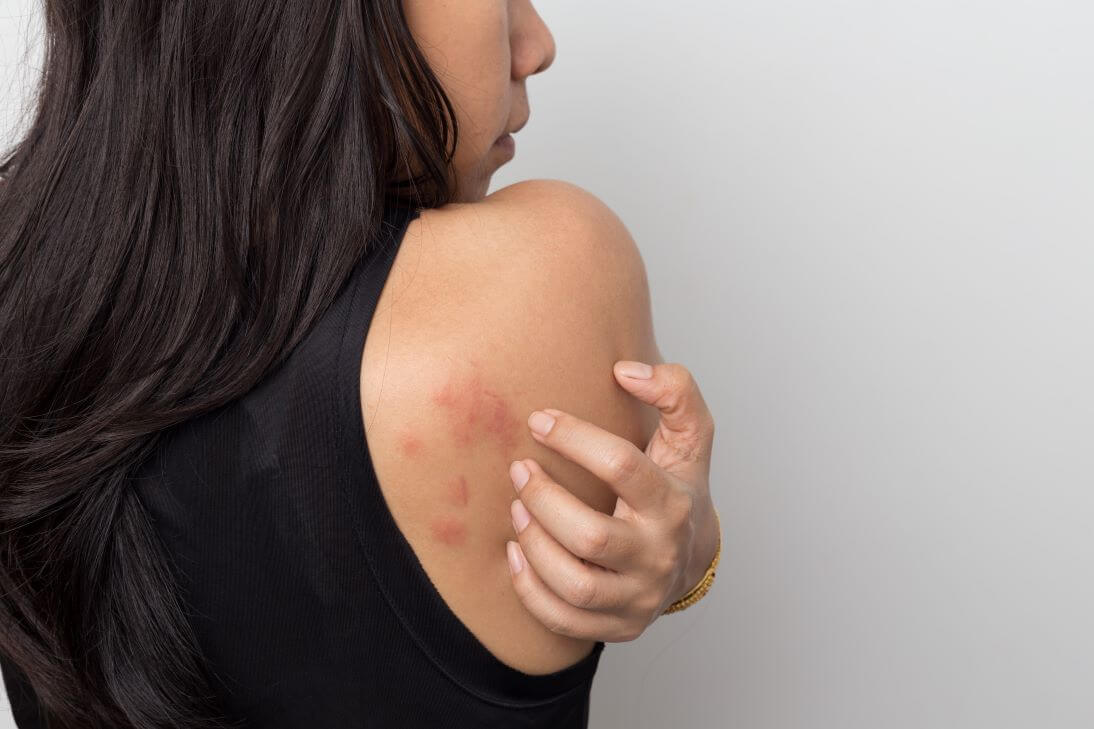Rashes are common skin conditions that impact millions of people each year. The underlying causes of a rash determine the appropriate treatment options, but it’s not always easy to pinpoint these causes. According to Dr. David Baltazar of U.S. Dermatology Partners in Peoria and Sun City West, Arizona, “Rashes can itch, burn, or have no symptoms at all. In most cases, rashes are an annoyance but can significantly interrupt daily life. There are numerous over-the-counter skincare products that can assist in soothing the symptoms of a rash. If you struggle with chronic, prolonged rashes, a dermatologist can help you improve skin health and prevent future breakouts.” In this blog, Dr. Baltazar discusses the causes and types of common skin rashes.
Causes of Common Rashes
There isn’t one known cause of rashes. Instead, there are a number of environmental and internal factors that may trigger the formation of a rash, including:
- Exposure to allergens. Poison ivy, oak, and sumac are common allergens that cause rashes. Other causes may include allergic responses to specific ingredients in products used or foods eaten.
- Skin conditions like rosacea, psoriasis, eczema, and dermatitis.
- Bites from insects, spiders, mites, or ticks.
- Bacterial, viral, or fungal infections.
- Taking certain medications.
- Contact with chemicals.
- Sensitivity to sunlight.
- Heat and moisture are trapped against the skin.
- Friction from clothes or other materials rubbing against skin repeatedly.
Common Types of Rashes
The type of rash is linked directly to the underlying cause. Below, Dr. Baltazar walks through the most common types of rashes, offering brief descriptions of each:
- Allergic response – This type of rash is the most common. It causes itchy, red bumps or patches of skin. It may be localized, developing where the skin came in contact with a specific allergen. If the rash develops in response to food, medication, or through inhaling something it may be more widespread.
- Chronic skin conditions – Eczema, rosacea, psoriasis, and other chronic skin conditions have their own sets of symptoms, but they can all cause itchy patches of skin rash. This type of rash will usually develop as part of a flare-up and accompany other common symptoms of chronic skin conditions.
- Insect and spider bites – Not all bites will cause a rash, but many types of insect and spider bites trigger the development of a rash. A small, itchy bump over the bite is the most common effect. If you notice swelling, pain, burning, or the bump grows larger, you may need to see a dermatologist.
- Miliaria – A type of rash that develops due to heat and sweating. It’s often referred to as heat rash. Typically, this type of rash develops as clusters of rashes around sweat glands. The rash itself is often described as causing a tingling or stinging sensation, and the bumps may fill with fluid and ooze.
- Ringworm – This type of rash develops as the result of a highly contagious fungal infection. This type of rash has a distinctive ring-shaped appearance. The skin around the rash is often inflamed or thickened and scaly.
- Cellulitis – A type of skin infection that may be fungal or bacterial that causes redness, inflammation, and fast-spreading sores that may ooze. Skin can be tender or warm to the touch. Fever and chills often accompany this condition. Due to the fast progression of cellulitis, emergency medical intervention may be required.
- Diaper rash – This is a type of rash that has characteristics of irritant dermatitis and heat rash. It develops on areas of an infant or child’s skin that are in direct contact with the diaper. Typically red in color, the skin may feel warm to the touch and have a sheen to it that makes the skin appear wet.
At-Home Assessment
According to Dr. Baltazar, “When you develop a rash, take a quick moment to write down some notes about anything in your environment that may be the underlying cause of the rash, especially anything new. This can help your dermatologist develop an effective treatment plan. You should also provide as many notes as possible to clearly describe the rash.”
To guide your notes about the rash, determine the type of bumps that form the rash. Some of the most common types of lesions that make up rashes include:
- Macular – Flat spots that are usually red in color.
- Papular – Raised bumps that often feel solid and may be referred to as hives, especially when related to an allergic response.
- Papulosquamos – Papular rash with some thickening of the skin.
- Vesicular – Fluid-filled lesions or blisters.
When performing an at-home skin rash assessment, ask yourself the following questions:
- How long have you had the rash?
- Has it spread or have you noticed additional symptoms?
- Where is the rash located on your body?
- Have you been exposed to an environmental allergen or irritant?
- Have you recently changed cosmetics, skincare products, cleaners, detergents, or other products you use regularly?
- Did you try a new food or start taking a new medication shortly before the rash developed?
Identifying Red Flags that Indicate a Need for Professional Care
You don’t always need professional intervention to treat rashes, but there are some situations where seeking dermatologic treatment is essential, including:
- Severe and widespread rash that covers a large portion of the body.
- Rapidly spreading rash.
- Rashes that form blisters or ooze pus.
- You’re experiencing signs of severe allergic response, including anaphylaxis (difficulty breathing), decreased blood pressure, and vomiting.
- You experience fever, nausea, swollen lymph nodes, or other symptoms accompanying the rash.
- You experience large purple patches of rash that may be indicative of blood flow issues or infection.
- The rash is painful or there is bruising around the rash.
- Rash forms in perfect circles that resemble a target.
Schedule a Dermatologic Consultation
Many types of rashes can be treated at home, but a dermatologist can help you heal and feel better fast. If you’re experiencing severe or prolonged discomfort that isn’t responsive to at-home treatments or you simply want a professional recommendation for the best way to care for skin with a rash, the U.S. Dermatology Partners team makes it simple to get started. Simply take a few moments to complete our online scheduling request form. Once we hear from you, we’ll be in touch to finalize the details of your upcoming visit.
Find a location near me
or


